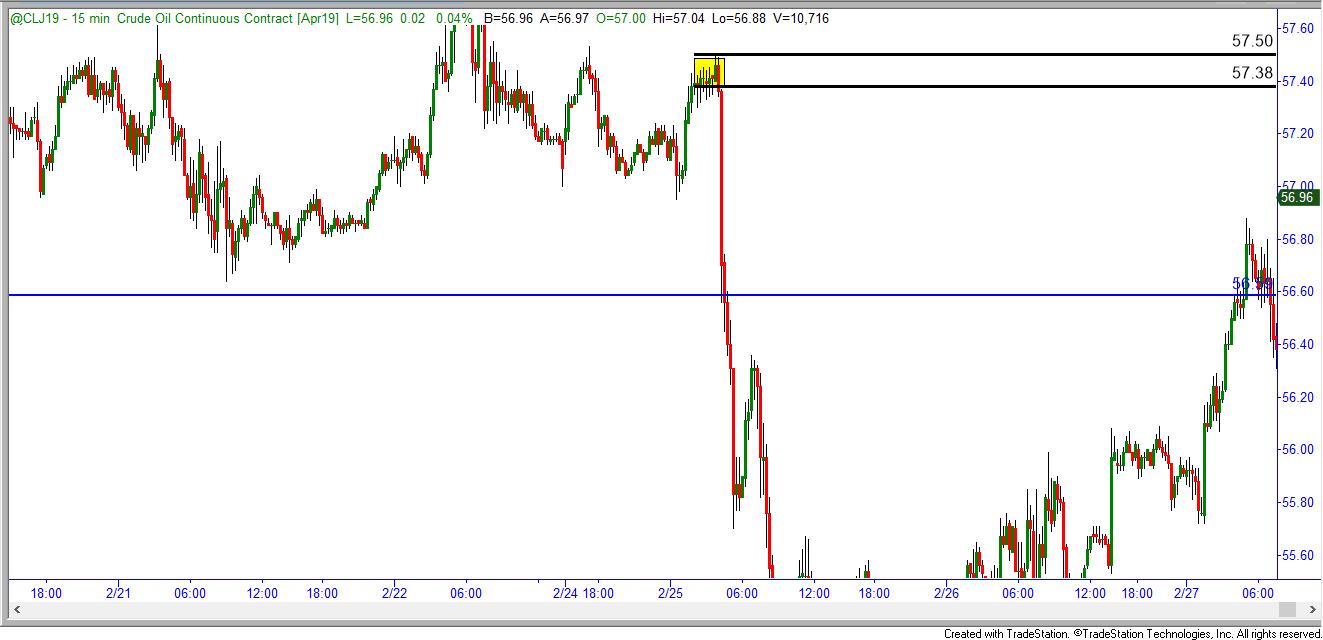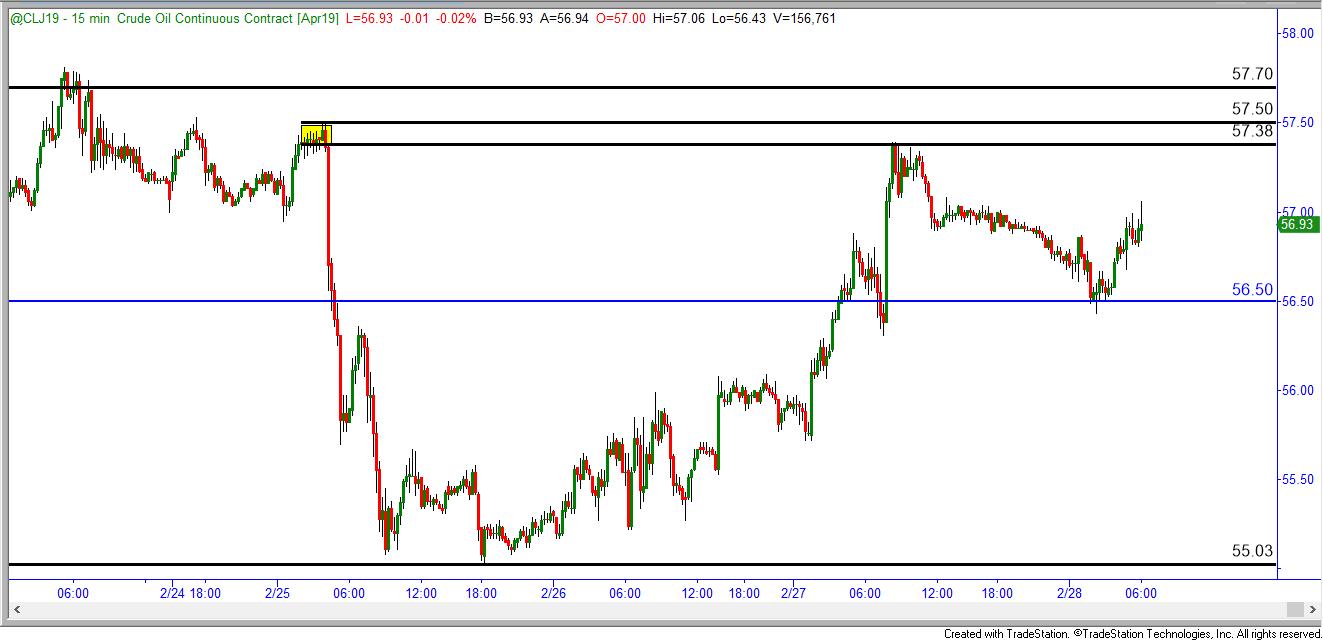Speculating in the financial markets can be extremely challenging; this is due to all the unknown factors that are continuously present in the markets. The nature of markets is that nothing is certain and everything can change quickly. For us mere mortals, the concepts of risk and uncertainty can be extremely hard to deal with as most of us are not hardwired to accept these as a part of daily life. As traders, however, these factors are indeed the reality of everyday life and as such a tested trading process is of critical importance.
In this week’s article, I’m going to go through three basic steps that should help traders formulate a trading process. Obviously, going through the particulars of a strategy is beyond the scope of this article; nonetheless, putting a trading process together can possibly help get a struggling trader on the right path. So, let’s get started.
The first step in a well-defined trading process is to identify where to enter a market with the lowest risk, highest probability, highest potential for your desired outcome. To do this, we must look at a price chart looking for both supply (where the unfilled sell orders are likely to be found) and demand levels (where the unfilled buy orders are positioned). This has to be done in various timeframes as we don’t know in what timeframe that formation will reveal itself. The purpose in finding these areas of supply and demand is so that we can anticipate when the market we’re trading touches either one of these levels and will reverse direction. At supply, we expect the market to turn down, and conversely, at demand it should rally. These are considered the lowest risk entry points.
In the chart below, we see a supply zone in the WTI crude oil contract that was created on February 25. We expect (no guarantees) that the CLJ19 will turn down when this zone is reached. This would be our shorting zone. How far it might fall is a function of where the opposing level is determined. This constitutes our potential target.
The first step allows us to quantify risk and reward. In this example, the entry at the supply zone, the stop (above the supply) and the target slightly above the opposing demand zone (the blue line). A key point is that the distance between both levels should be far enough away so that even if we’re right only a small percentage of the time, we could still be profitable. Below is the chart of the what transpired after CLJ19 touched the level.
A given in our trading process should be that low risk entries always take into account the fact that we’re not always going to be right, and therefore, if we’re wrong we will lose very little (which very well could have happened here).
The next step once the levels are found and the risk to reward is assessed, is simply to place the orders in the market. This can be done very easily on most professional level platforms. These allow us to simultaneously place (in the above example) a sell limit order to enter the trade, a buy stop, and a buy limit order to exit.
The final step in the trading process is to manage the trade once it is triggered. This can be done by simply moving the stop to break-even once a certain target is achieved, or not do anything by being comfortable with letting it hit the target or stop out. The most important element in this step is to be as emotionally detached as possible from price movement. To achieve this, it is preferable that the exit strategy is well defined BEFORE the trade is triggered and that it is simple and comprised of a few adjustments.
That is a good starting point for a three step trading process that can be replicated and put into plan. Of course, it’s not as simple as I describe here because learning how to identify the highest quality low risk zones requires training and time. If you have the motivation to learn, at Online Trading Academy we are here to help.
Read the original article here - Trading Basics: Define Your Trading Process
This content is intended to provide educational information only. This information should not be construed as individual or customized legal, tax, financial or investment services. As each individual's situation is unique, a qualified professional should be consulted before making legal, tax, financial and investment decisions. The educational information provided in this article does not comprise any course or a part of any course that may be used as an educational credit for any certification purpose and will not prepare any User to be accredited for any licenses in any industry and will not prepare any User to get a job. Reproduced by permission from OTAcademy.com click here for Terms of Use: https://www.otacademy.com/about/terms
Editors’ Picks
EUR/USD clings to daily gains above 1.0650

EUR/USD gained traction and turned positive on the day above 1.0650. The improvement seen in risk mood following the earlier flight to safety weighs on the US Dollar ahead of the weekend and helps the pair push higher.
GBP/USD recovers toward 1.2450 after UK Retail Sales data

GBP/USD reversed its direction and advanced to the 1.2450 area after touching a fresh multi-month low below 1.2400 in the Asian session. The positive shift seen in risk mood on easing fears over a deepening Iran-Israel conflict supports the pair.
Gold holds steady at around $2,380 following earlier spike

Gold stabilized near $2,380 after spiking above $2,400 with the immediate reaction to reports of Israel striking Iran. Meanwhile, the pullback seen in the US Treasury bond yields helps XAU/USD hold its ground.
Bitcoin Weekly Forecast: BTC post-halving rally could be partially priced in Premium

Bitcoin price shows no signs of directional bias while it holds above $60,000. The fourth BTC halving is partially priced in, according to Deutsche Bank’s research.
Week ahead – US GDP and BoJ decision on top of next week’s agenda

US GDP, core PCE and PMIs the next tests for the Dollar. Investors await BoJ for guidance about next rate hike. EU and UK PMIs, as well as Australian CPIs also on tap.
RECOMMENDED LESSONS
Making money in forex is easy if you know how the bankers trade!
Discover how to make money in forex is easy if you know how the bankers trade!
5 Forex News Events You Need To Know
In the fast moving world of currency markets, it is extremely important for new traders to know the list of important forex news...
Top 10 Chart Patterns Every Trader Should Know
Chart patterns are one of the most effective trading tools for a trader. They are pure price-action, and form on the basis of underlying buying and...
7 Ways to Avoid Forex Scams
The forex industry is recently seeing more and more scams. Here are 7 ways to avoid losing your money in such scams: Forex scams are becoming frequent. Michael Greenberg reports on luxurious expenses, including a submarine bought from the money taken from forex traders. Here’s another report of a forex fraud. So, how can we avoid falling in such forex scams?
What Are the 10 Fatal Mistakes Traders Make
Trading is exciting. Trading is hard. Trading is extremely hard. Some say that it takes more than 10,000 hours to master. Others believe that trading is the way to quick riches. They might be both wrong. What is important to know that no matter how experienced you are, mistakes will be part of the trading process.


